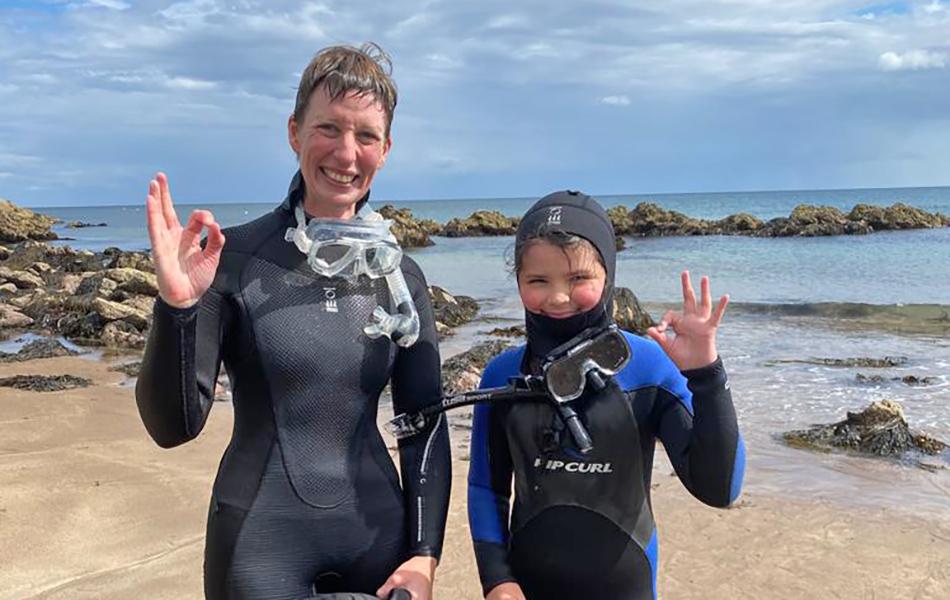
In March 2018, Marg Baldwin looked at issues surrounding full-face masks for snorkelling as there were growing concerns about the safety of these masks. But what are snorkel FFMs and how do they work?
Tragically, in recent years there have been snorkelling fatalities in Hawaii, some of which involved the use of a snorkel full-face mask (FFM). In Hawaii, investigations are continuing into these snorkelling deaths. CO2 build-up is thought to feature in some of the tragic incidents although in several cases, it appears that age (over 50) fitness and health issues were contributory factors and not all the incidents involved the snorkel FFM as some were using a half mask and separate snorkel.
Over the last 18 months, mostly in warm water holiday destinations, and now more recently here in the UK, there has been a marked increase in the availability of snorkel FFMs. Many of these masks come from established diving equipment manufacturers who continue to research and develop the production of snorkel FFMs that significantly reduce any risk of users experiencing a carbon dioxide build-up in their masks. However, some of the available masks appear to be low cost ‘copies’ which could have leaking issues and may cause CO2 build-up.
What is a full-face snorkel mask and how are they used?
As the name suggests, the snorkel FFM covers the whole of the user’s face. The masks are usually fitted with an oral / nasal mask designed to fit closely over the user's mouth and nose, so they can breathe normally. In some designs, air is breathed in through a central tube in the snorkel direct into the oral /nasal mask. Expired air usually goes out through two one-way valves into the main part of the mask then into two separate tubes in the snorkel and into the atmosphere – different manufacturers have variations on this method. In Europe, there are established safety standards for half-masks and separate snorkels - both have specific requirements. As the snorkel FFM is a very different product, manufacturers continue to investigate applicable safety standards. In some current advertising, snorkel FFMs are seen with a reference to EN-136. This European Standard specifies minimum requirements for full-face masks for respiratory protective devices and there are discussions as to whether it applies to an in-water snorkel FFM.
The snorkel FFM is designed primarily for slow swimming / floating on the surface looking down through the water. Some manufacturers indicate their products could be taken up to 3 metres underwater, often with pictures on the packaging. There is no provision for a snorkeller to equalise the significant air space in the mask or their ears should they go underwater.
‘Traditional’ half mask and separate snorkel
With the appropriate training and practice the traditional half mask and separate snorkel allows the user to dive down, equalise their ears and mask and swim along enjoying the underwater world first-hand. There are established and fully recognised / identifiable standards for the manufacture of these masks and snorkels. Masks and snorkels are small and compact easy to take on holidays abroad.
Several snorkel FFM manufacturers are continuing to refine the design of their products. Some are calling for authorities to develop dedicated safety standards for full-face snorkel masks and to restrict careless manufacturers and distributors from bringing unsafe products to the market. BSAC will continue to monitor the situation.
Think SAFE – Snorkel SAFE
Marg Baldwin
Snorkel Instructor Trainer
Find out more about snorkel training.

 Author: Marg Baldwin | Posted 22 Dec 2019
Author: Marg Baldwin | Posted 22 Dec 2019



